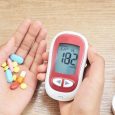Getting Tested For Allergies
Allergies are often considered one of the most annoying aspects of the pollen season. Hay fever is a common complaint among even those people who are not normally allergic to anything.
Getting tested for allergies is an excellent way to get on the right path when it comes to finding the correct medication for alleviating your allergy symptoms. Most often, allergy testing is done in a clinical setting by a doctor who specializes in the immune system or in allergies alone. These doctors are called allergists.
Allergists are further divided into categories like pediatric allergy specialists and even asthma specialists. In general, all allergy testing is accomplished by a specialist rather than a family doctor or a primary care physician.
Getting tested for allergies will involve 1 of 2 tests. The most common testing procedure is the allergy skin test. For this procedure, the doctor scratches or pricks an area of skin and then exposes that open skin to the allergen. Often, many different allergens can be tested at one time with this method.
Along with scratching or pricking the skin, injecting small amounts of an allergen under the skin can also be a part of an allergy skin test. Again, several allergens can be tested at one time during this procedure. If the doctor suspects that the patient has severe allergies or is allergic to many different items, allergy skin testing can find almost five hundred of the most common allergy producing factors. Even environmental allergens can be tested in this way.
An allergy patch test is another procedure that can be considered a part of the allergy skin testing. This test involves taping a pad that is soaked with an allergen to an area of the body. The pad is worn for up to seventy-two hours and then removed. The exposed skin area will develop a reaction that might include redness, swelling or itching after exposure to the allergen.
Blood testing can also be used to determine whether or not a person is allergic to a substance. Blood tests are effective for people who are unable to tolerate allergy skin tests. A small amount of blood is drawn from the patient and analyzed by a laboratory.
In the lab testing, technicians will look in the blood for specific antibodies. The antibodies are produced by the patient’s body when he or she has been exposed to a particular allergen. The laboratory can determine what type of allergen is causing the immune response by the type of antibodies found in the blood. This procedure is much less efficient and less sensitive than the skin allergy testing but does offer an option for those patients who are unable to tolerate skin tests.
Recommended Allergy Products












